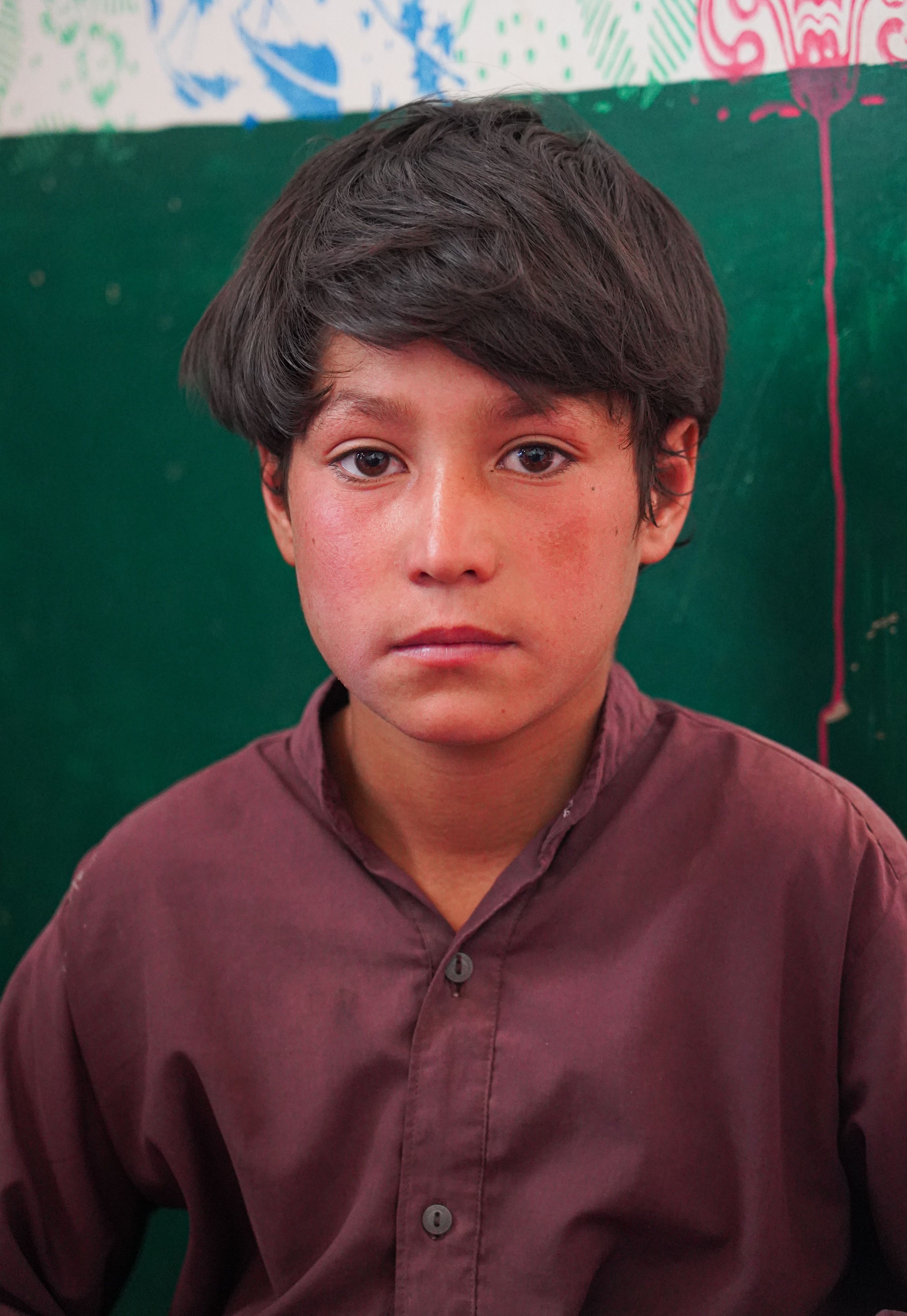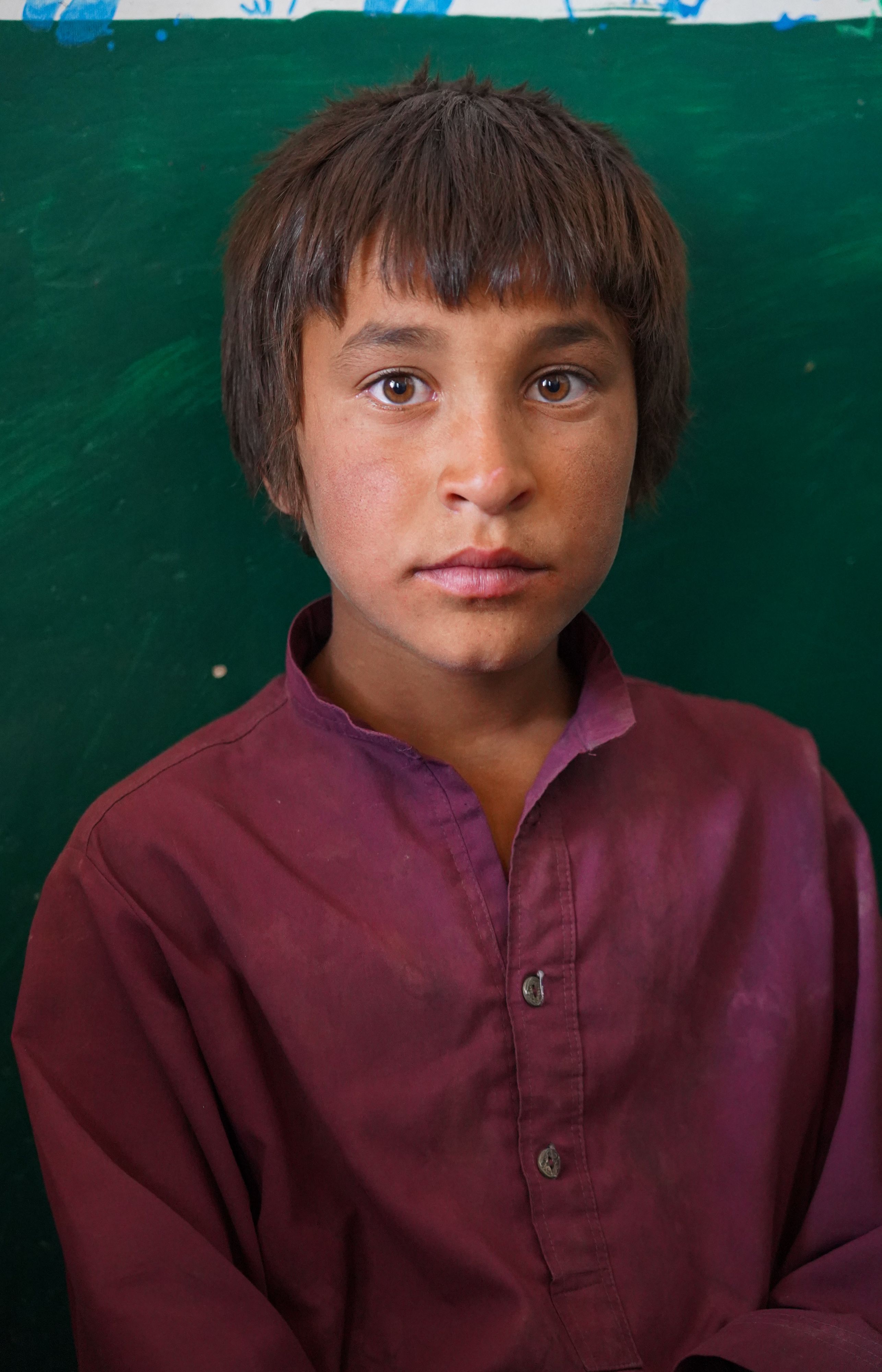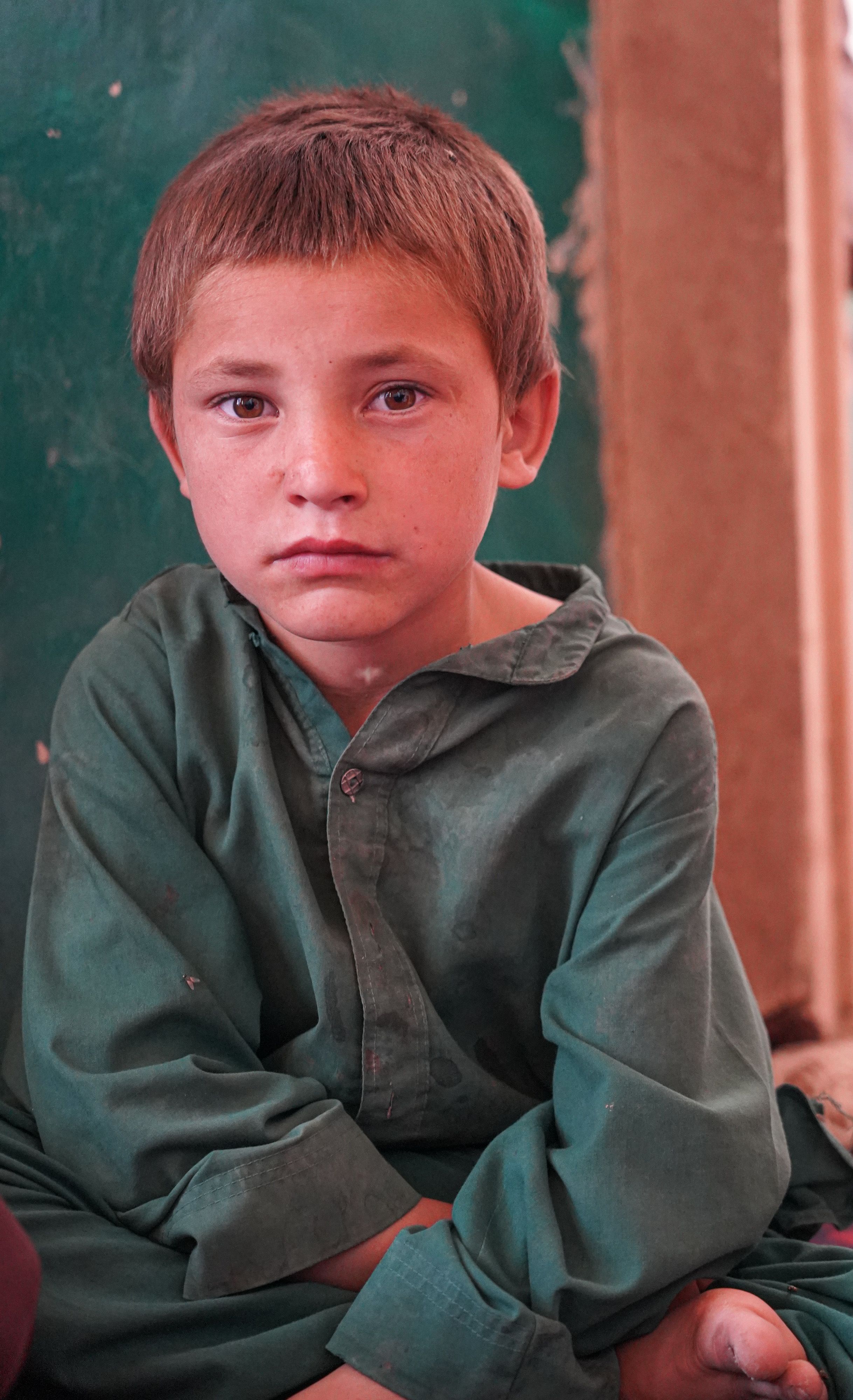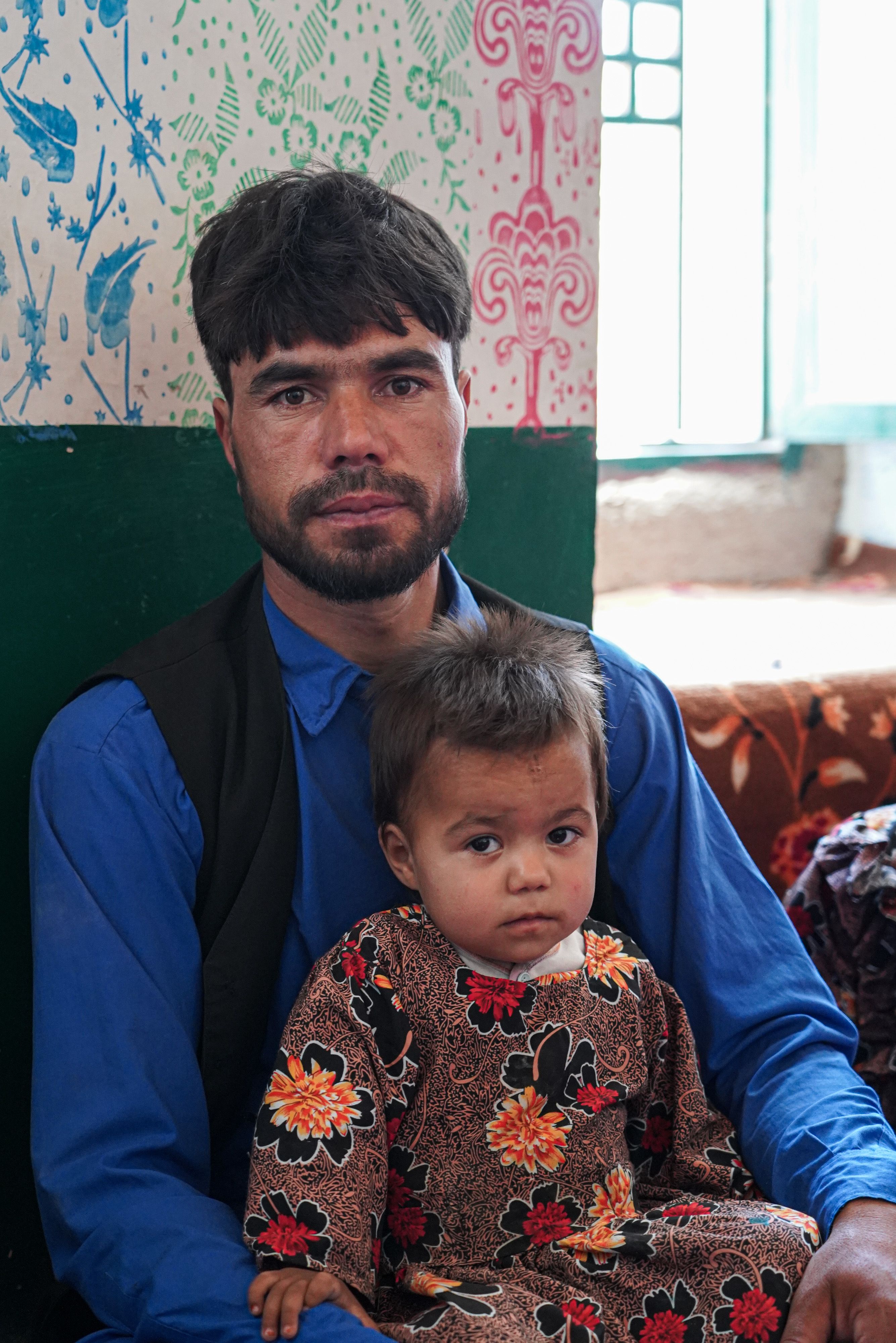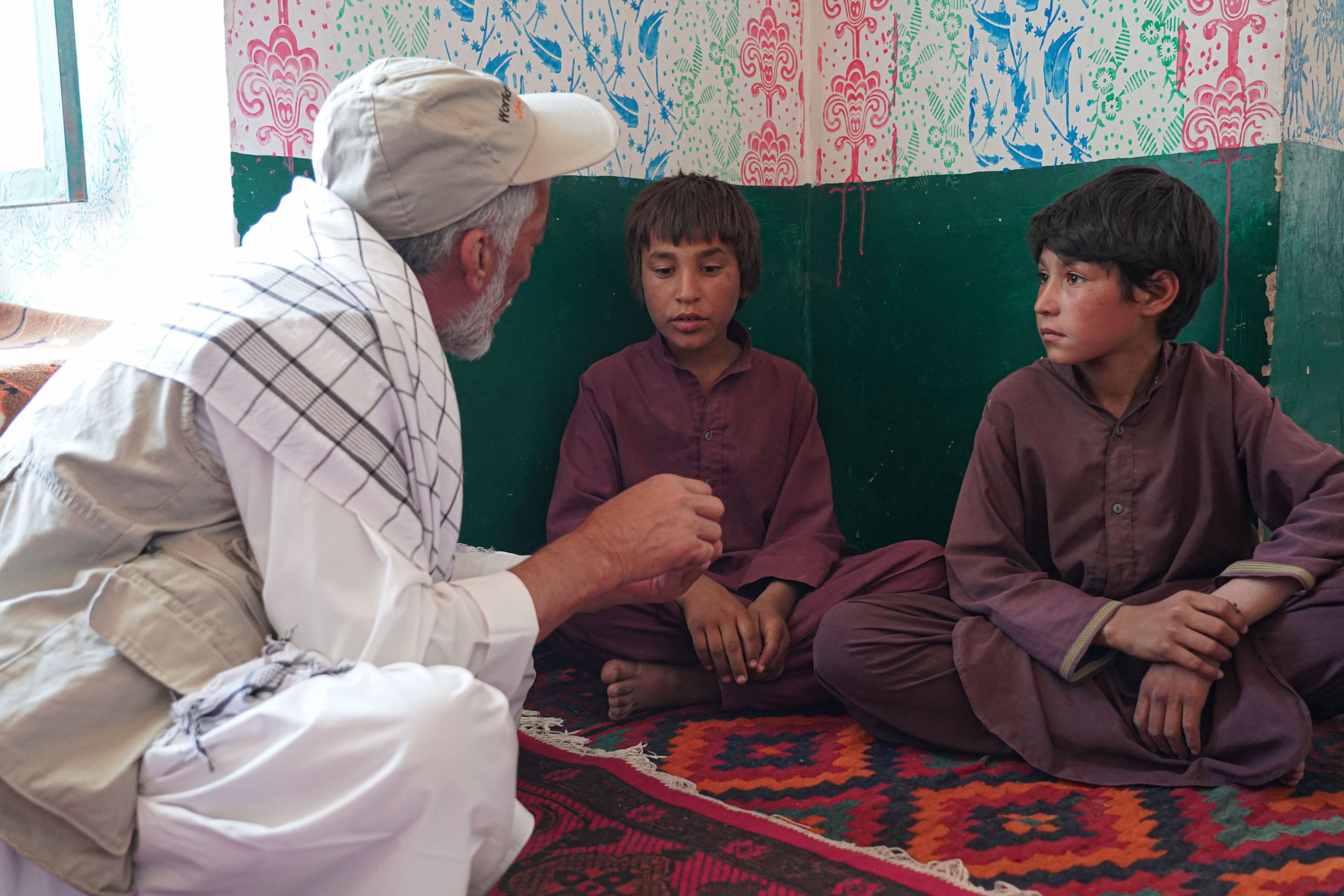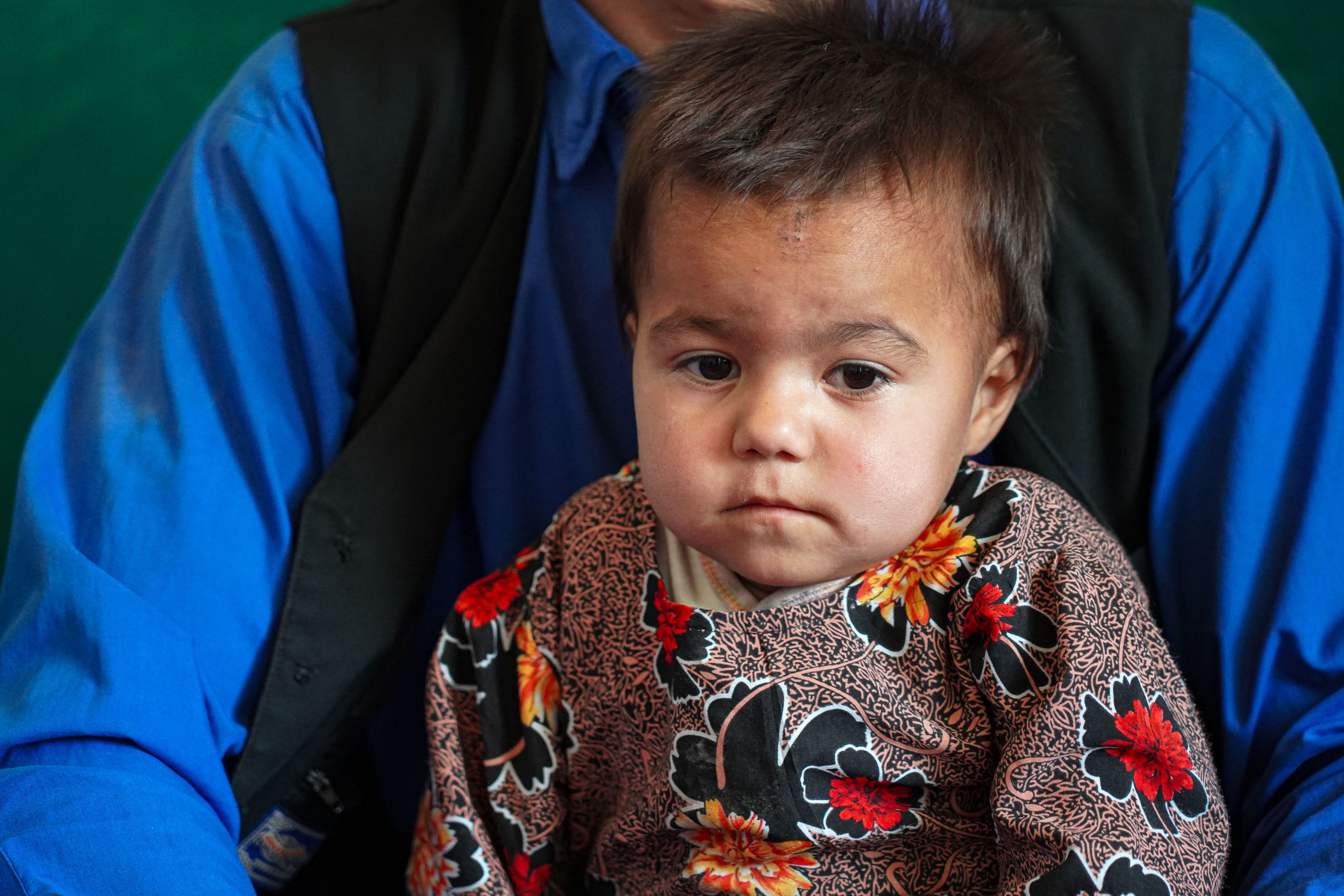The deadly threat to Afghan children as mine action faces funding shortfalls
By Laurentia Jora, Strategic Communications Manager, WV Afghanistan
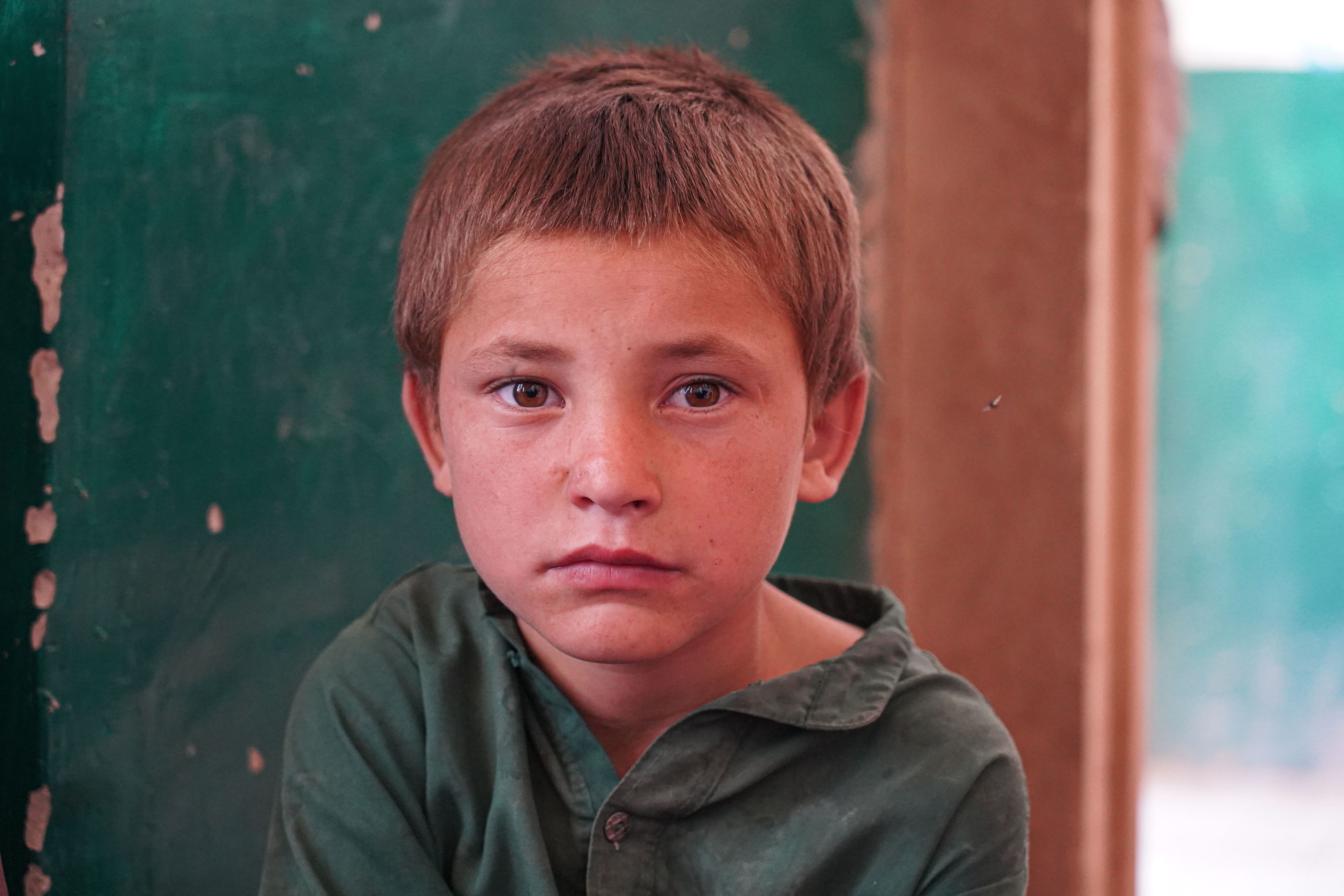
Qarchiqai, Qadis district, Badghis province – It was Friday, May 8, 2025. Twelve-year-old Salahuddin and his younger brother Najmuddin, 10, hurried along a dusty path, teasing each other as they made their way to one of the parcels of land owned by their father, a farmer. The ground reflected the intensifying heat of the spring sun, as the gusty, dry wind compelled the dust to dance madly.
The boys spent much of their free time in these fields, some 10 kilometres from home. With school out for the day, they had come to clear the grass that had overtaken the land, suffocated by drought.
As they tugged handfuls of grass from the earth, the pile of fresh cuttings steadily grew beside them. Their only respite came from brief sips of a container of water, while beads of sweat traced paths steadily down their sun-weathered faces. Salahuddin laboured with quiet determination until he sensed something harder than the cracked, drought-baked soil beneath his right foot. He paused, stepped back, and began carefully clearing away the earth.
The tip of something metallic caught the light – encrusted with rust and dirt, and half-buried. Salahuddin crouched lower, brushing away the dust with his calloused fingers. It didn’t look like a farming tool, just a disk, slightly raised, its edges jagged with corrosion. Scrap metal, he thought.
Children on the streets of Qarchiqai village, Qadis district, Badghis province.
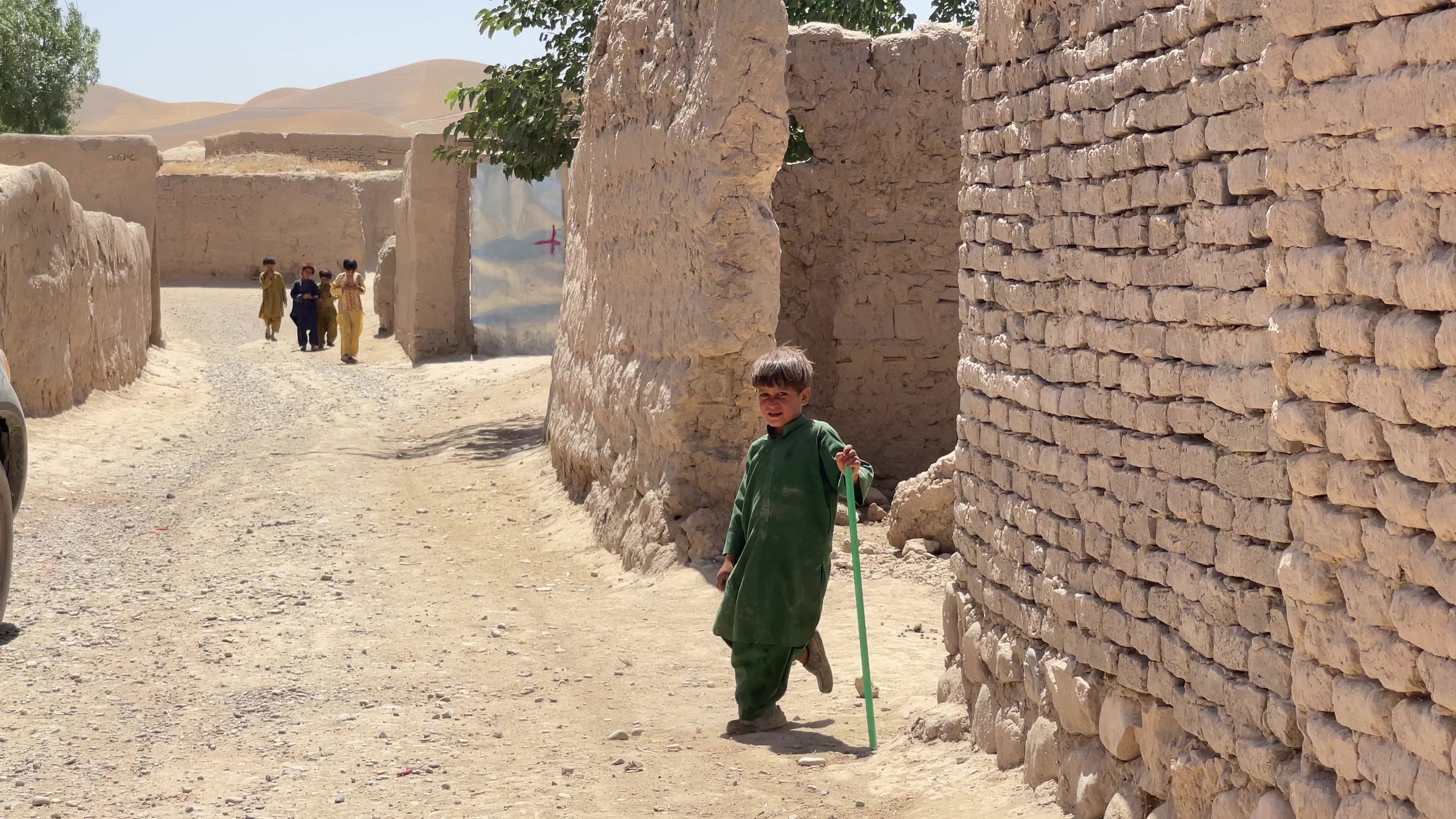
The next day, May 9, the boys returned to the valley near their father’s land, this time accompanied by their two cousins, Jamaluddin, 8, Ziauddin, 11, and their friend, Khaled, 8. The ball they brought bounced from one to the other, their movements free and unrestrained. Their laughter cracked sharply against the quiet of the place. Only a few farmers could be seen in the distance.
This was how they spent their Saturdays – together, under the blazing sun, usually inventing a game on the spot every time they met.
Salahuddin hadn’t forgotten the piece of metal he had found the day before. With a mix of pride and lingering curiosity, he urged the others to follow him. The boys scrambled up the hill, clumsy and breathless, the slope steepening beneath their feet. In the warm, fading light of the setting sun, they spotted the rusted object their friend was pointing to.
“Let’s take it down to the streambed,” he said.
The five boys rushed back into the valley below. They crouched around the scrap metal, studying its strange, jagged form with careful fascination.
Qarchiqai village, Qadis district, Badghis province – Khaled, 8, stands inside the home of his friends Salahuddin and Najmuddin.
Qarchiqai village, Qadis district, Badghis province – Khaled, 8, stands inside the home of his friends Salahuddin and Najmuddin.
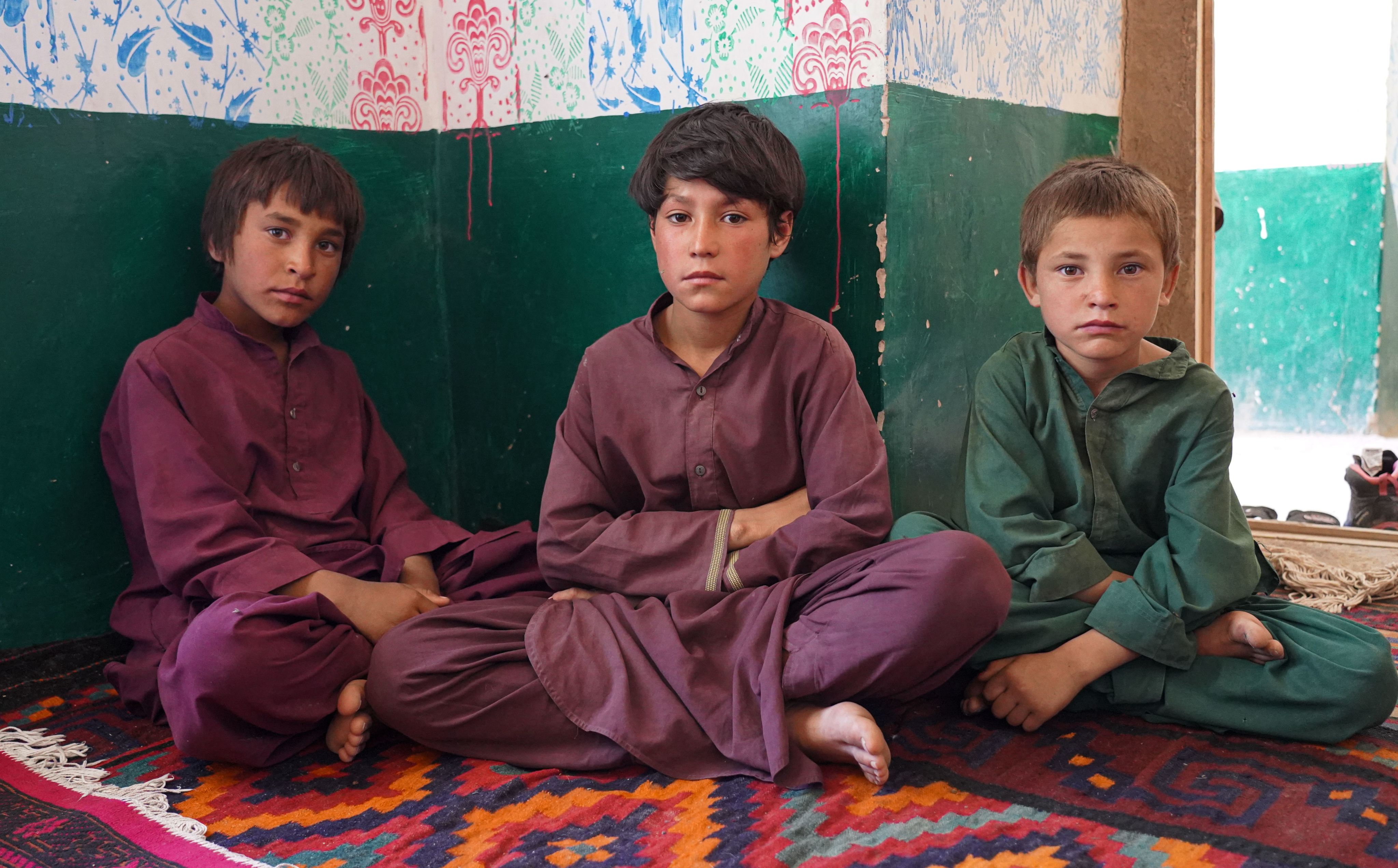
Ziauddin, 11
Ziauddin, 11
Jamaluddin, 8
Jamaluddin, 8
“The donkey’s in the chickpeas!” someone shouted. Ziauddin sprang up and took off running to catch his donkey, spotted only a few metres away from the spot the boys were standing.
In the meantime, Salahuddin invented a new game. What if they threw stones at the metal?
One ping, then a second – stone striking the metal – a third, and on the fourth, the explosion rose from the ground like a powerful shockwave.
Eight-year-old Jamaluddin was four meters away from the mine, as was his cousin Najmuddin, his brother Ziauddin, and his friend Khaled.
The eight-year-old boy remembers the noise, the sound that felt like it tore through the earth. He remembers running. He remembers the dust rising, thick and blinding. He remembers turning back.
Khaled, injured in the head, was conscious but dazed, and Ziauddin lay on the ground, fainted.
Najmuddin, 10, lay nearby, still breathing, but barely. “We tried to lift him,” Jamaluddin said. “But parts of his body, like under his arm and in other places, were injured. We pulled him, called his name. He didn’t answer, just moved his head and let out a moan.”
“He was bleeding heavily,” he continued. “From beneath his arm, and in other places too. He couldn’t speak.”
Minutes later, he didn’t move at all. “Then Musa [a neighbour] came and threw a blanket over him,” said Jamaluddin.
Before he had chance to process this tragedy, he learned that Salahuddin, his other cousin, had also been killed, instantly.
Sharafuddin and Aglima, parents of the two boys killed by unexploded ordnance, sit with their daughters, aged 2 and 4, in their home in Qarchiqai village.
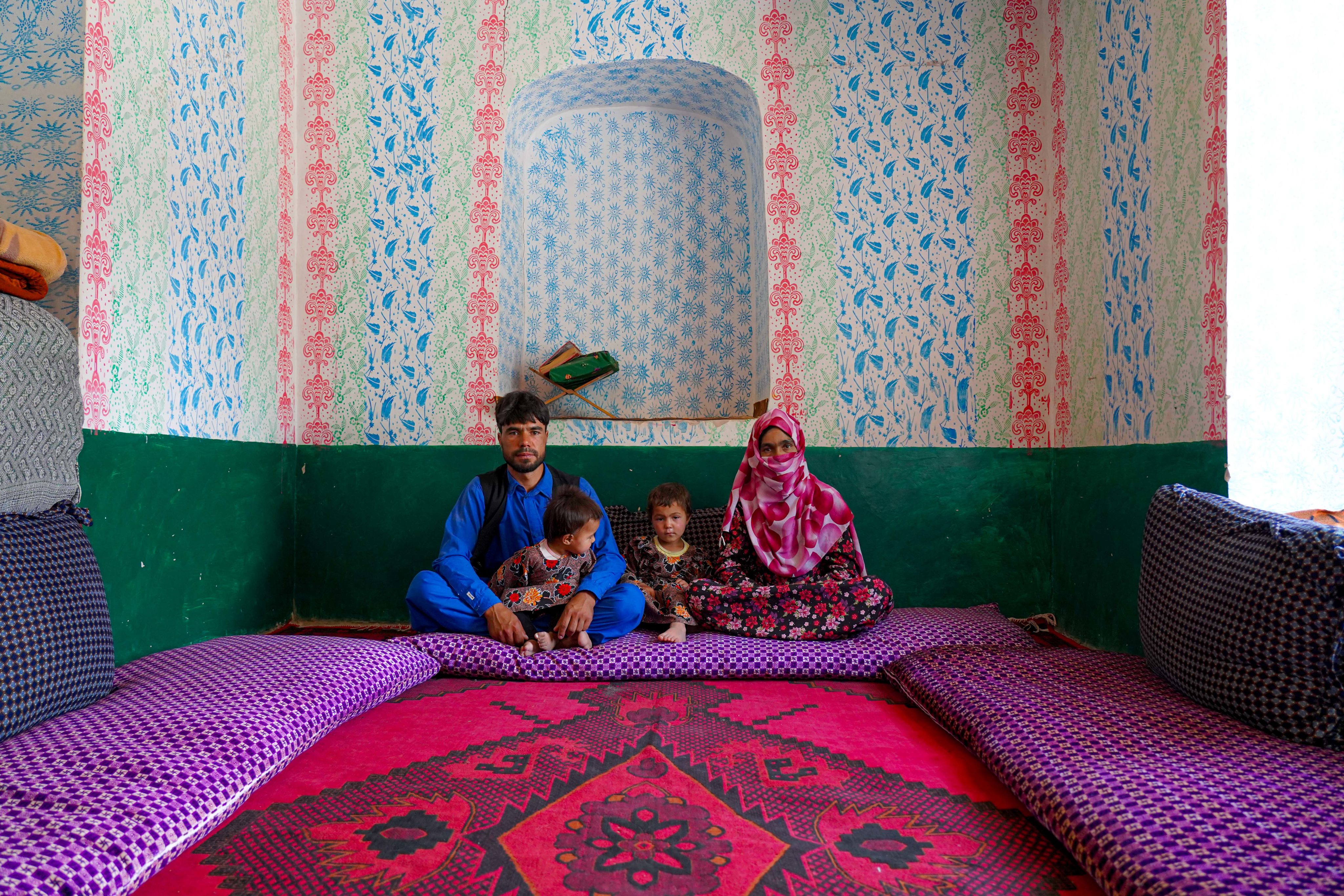
That day, two children, the 12- and 10-year-old sons of Sharafuddin and Aglima, were killed. Another was injured, while two others witnessed the blast but escaped without physical harm.
“On May 9, I was working in one of my fields, about 15 kilometres from our village, when I got a call from a relative,” Sharafuddin recalls. “All he said was, ‘Come quickly. Your children got into a fight.’ That was it. No details.”
Five minutes later, the father arrived at the location. “As I got closer, I saw something on the ground, my children’s shoes. At that moment, I felt something heavy drop inside me. I felt sick. I knew then that something terrible had happened.”
Sarafuddin and Aglima are not the only Afghan parents living with unnecessary bereavement. As recently as June 24, 2025, two children were killed and two injured after one of them struck an unexploded device with an axe in Dar-e-Noor, Nagahar province. 6.4 million Afghans live at risk of unexploded ordnance (UXO), with children making up 80 percent of blast casualties and injuries.
Whether playing in the streets or on farmland, walking to school, fetching water, looking for scrap metal or working the fields, millions of children face daily exposure to unexploded ordnance. Estimations show that 40 children are killed or seriously injured each month by these hidden remnants of war.
“Because of decades of conflict, UXO is a threat in almost every district in Badghis. It’s widespread. Among the seven districts, Bala Murghab and Jawand are the most heavily contaminated,” explains Hayatullah Tayeeq, World Vision’s Zonal Manager in Badghis.
“The most common types of unexploded ordinance we see are anti-personnel devices, landmines, and unexploded bullets,” he adds. These are often buried or hidden in the mountains or farmland where families and children spend most of their time.
The danger is compounded by a widespread lack of awareness. Families don’t know they live in contaminated areas. They don’t recognise the devices, don’t know what to do if they encounter one, or how to train their own children.
“We had no idea that land was dangerous. These are lands our families have farmed for generations. Our children played there all the time. No one warned us. No one told us there were explosives left behind. There were no awareness sessions, not a single one,” shares Sharafuddin.
More than 400 educational facilities and 210 health centers lie within one kilometre of hazardous areas, putting millions of children at daily risk of death or lifelong disability.
“I know what poverty is. I’ve lived it all my life. I never had the chance to go to school, but I knew how much education could change a life. That’s why I insisted my boys go. I wanted a different life for them. I wanted them to be doctors, engineers, teachers – anything but farmers struggling like me. I had so many hopes for them. In one moment, everything collapsed,” says Sharafuddin, holding his two-year-old daughter.
“I know what poverty is. I’ve lived it all my life. I never had the chance to go to school, but I knew how much education could change a life. That’s why I insisted my boys go. I wanted a different life for them. I wanted them to be doctors, engineers, teachers – anything but farmers struggling like me. I had so many hopes for them. In one moment, everything collapsed,” says Sharafuddin, holding his two-year-old daughter.
Sharafuddin shows photographs of his sons, Najmuddin, 10, and Salahuddin, 12, who were killed by an unexploded ordnance.
Sharafuddin shows photographs of his sons, Najmuddin, 10, and Salahuddin, 12, who were killed by an unexploded ordnance.
Saifuddin, uncle of the two boys killed by an unexploded ordnance and father of their cousins Ziauddin and Jamaluddin, recalls: “The boys loved football. They’d play here in this room, chasing each other, laughing.”
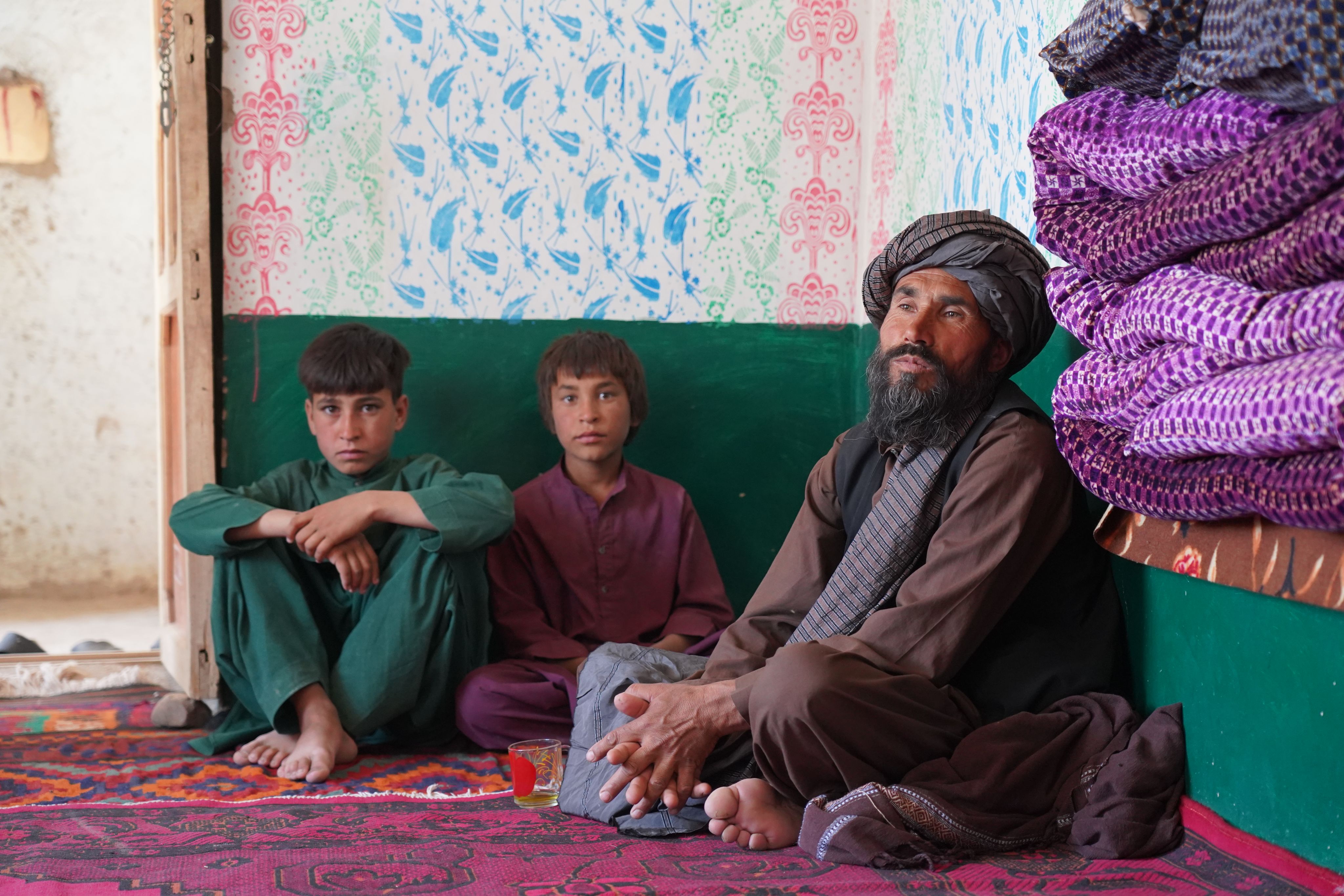
Ziauddin and Khaled survived the unexploded ordnance blast; their friends Salahuddin and Najmuddin did not. Mental health services are not available in remote areas like Qarchiqai, leaving affected children and their families without necessary support.
Ziauddin and Khaled survived the unexploded ordnance blast; their friends Salahuddin and Najmuddin did not. Mental health services are not available in remote areas like Qarchiqai, leaving affected children and their families without necessary support.
Sharafuddin shows photographs of his sons, Najmuddin, 10, and Salahuddin, 12, to Hayatullah Tayeeq, World Vision’s Zonal Manager in Badghis province.
Sharafuddin shows photographs of his sons, Najmuddin, 10, and Salahuddin, 12, to Hayatullah Tayeeq, World Vision’s Zonal Manager in Badghis province.
Sharafuddin’s youngest daughter will grow up never knowing her two brothers.
Sharafuddin’s youngest daughter will grow up never knowing her two brothers.
The scale of UXO contamination in Afghanistan is vast: explosive hazards affect roughly 133 square kilometres of agricultural land, 878 square kilometres of grazing areas, 167 square kilometres of residential and public spaces, and 32 square kilometres of irrigation canals and roads. That’s an area three times larger than the size of Kabul, the country’s capital and largest city.
Despite the urgency, mine action as a sector is being scaled back due to a critical drop in funding. Key donors have either reduced their contributions or withdrawn entirely.
Afghanistan is sometimes described as the ‘birthplace’ of demining work. In 2011, around 15,000 people were employed in mine clearance across the country. Today, only 1,500 remain. One-third of the sector’s capacity has been lost in 2025 alone due to ongoing funding cuts.
Beyond clearance, international funding has also supported essential activities such as surveying, information sharing, and early-warning systems. These efforts have been critical to preventing gaps in coverage, avoiding duplication of work, and ensuring the overall efficiency and safety of humanitarian operations.
Without reliable mapping and data sharing, the delivery of aid becomes more dangerous. “The risk is real. Our teams have unknowingly driven over UXOs before, thankfully, without incident. But with no comprehensive maps or warning systems in place, the threat is everywhere,” says Hayatullah Tayeeq. “It hasn’t stopped us from delivering aid, but it adds an invisible layer of danger to every field visit.”
This is not just a short-term funding gap, it might be the beginning of a long-term protection crisis. If mine action systems are allowed to collapse now, the cost will be measured in children’s lives.
“I had so many hopes for them. In one moment, everything collapsed,” said Sharafuddin, the father of two boys killed by the mine. “And what hurts the most is knowing it could have been prevented.”
And it could indeed have been prevented – if warning systems had been in place, if hazard zones had been mapped, and if local communities had been given the knowledge, they needed to protect their children.
Many more young lives would have been lost were it not for the work of local and international demining actors, efforts that have only been possible because of sustained international support.
Now, that support is drying up. When the systems meant to protect children begin to disappear, the risk doesn’t vanish, it multiplies.
And it is children who will pay the ultimate price.
World Vision's standard policy is to change names and identifiable details of people featured in our publications. In this instance, however, we believe the best way to honour the participants and their stories is to retain identifiers, to situate the story in history and geography, and to emphasise the precise human cost of the unexploded ordnance and demining funding crisis. All children and their parents featured in this story gave full consent for the use of their images and names, and we retain these by way of recognising their generous investment in the story.

